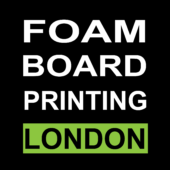Building an RC Plane from Foam Board: A Step-by-Step Guide
Building your own RC (Radio Controlled) plane from foam board is not only a rewarding DIY project but also a fantastic way to delve into the world of model aviation. Foam board, readily available at craft stores, is lightweight, affordable, and easy to work with, making it an ideal material for constructing RC planes. In this guide, we’ll take you through the steps to create your very own foam board RC plane.
Step 1: Gather Materials and Tools
Before you begin, gather all the necessary materials and tools:
- Foam board
- Hobby knife or utility knife
- Hot glue gun and glue sticks
- Ruler or straight edge
- Tape (such as packing tape or duct tape)
- Motor, propeller, ESC (Electronic Speed Controller), battery, and radio system (receiver and transmitter)
Step 2: Design Your Plane
Decide on the type and size of the RC plane you want to build. Search online for free plans or design your own using software like Adobe Illustrator or SketchUp. Consider factors such as wingspan, wing shape, and fuselage design based on your flying preferences and experience level.
Step 3: Cut Out the Components
Using a hobby knife or utility knife, carefully cut out the various components of your plane from the foam board according to your design. This typically includes wings, fuselage sides, tail surfaces, and any additional parts like landing gear or wing spars.
Step 4: Assemble the Airframe
Assemble the components of your plane using hot glue or another suitable adhesive. Pay close attention to alignment and symmetry to ensure proper flight characteristics. Reinforce critical areas such as the wing joints and fuselage with additional foam board or skewers for added strength.
Step 5: Install Electronics
Mount the motor, propeller, ESC, and battery onto the airframe according to your design specifications. Securely attach the radio system (receiver and servos) inside the fuselage, ensuring proper linkage for control surfaces like ailerons, elevator, and rudder.
Step 6: Balance and Trim
Before your maiden flight, carefully balance the plane by adjusting the position of the battery and other components to achieve the correct center of gravity. Test the control surfaces to ensure they move freely and symmetrically. Make any necessary trim adjustments to optimize flight stability and control.
Step 7: Test Flight
Take your foam board RC plane to an open, flat area free from obstacles and spectators for its maiden flight. Gradually increase throttle and gently launch the plane into the air, maintaining control and adjusting trim as needed. Start with short flights and gradually increase duration and complexity as you gain confidence and experience.
Conclusion
Building an RC plane from foam board is a rewarding and enjoyable hobby that combines creativity, craftsmanship, and the thrill of flight. With careful planning, attention to detail, and a bit of patience, you can create your own custom-designed aircraft capable of performing a wide range of maneuvers. Whether you’re a beginner or an experienced pilot, the process of building and flying your own foam board RC plane is sure to provide hours of entertainment and satisfaction. So, roll up your sleeves, unleash your creativity, and take to the skies with your homemade creation!
